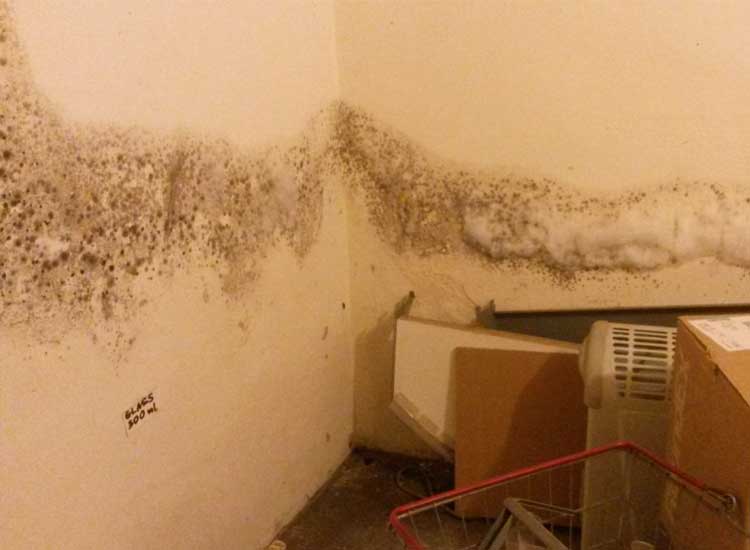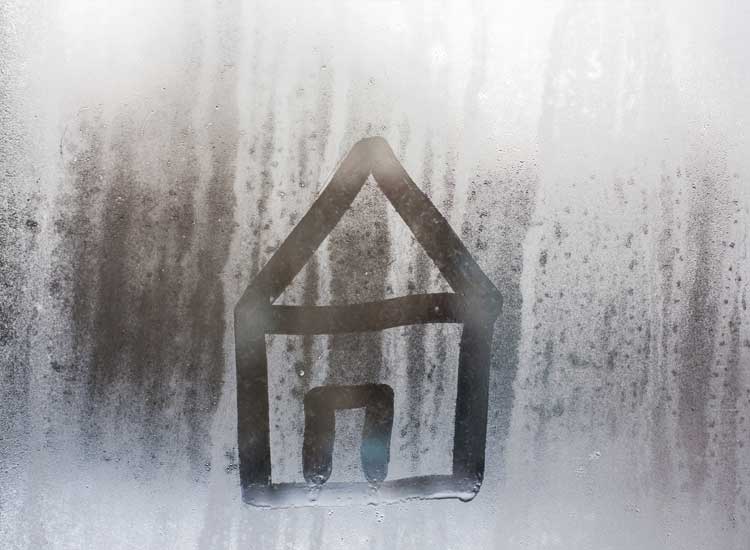What Causes Condensation?

Condensation is caused my high moisture content in the air condensing on cold surfaces. Modern living dictates that properties are fitted with central heating, double glazed windows, insulation and general high levels of draught proofing. Previously there were sash and case windows which were single glazed and generally draughty and a coal fire with a draughty chimney, thus the circulation of air in these properties was good and there was little or no condensation.
We have, over the years, effectively sealed our houses against external air, as a result there is more warm air high in moisture content within the property being “trapped” this increases the relative humidity RH (the amount of water vapour present in air expressed as a percentage of the total volume of the air) and can result in condensation forming on cold surfaces.
Throughout our everyday lives, people will add water vapour to their property’s atmosphere by,
- Boiling Kettles
- Bathing
- Showering
- Drying clothes on radiators
- Breathing
- Cooking
A rise in RH does not necessarily indicate that your property has a problem, however, as most houses have timed heating the property tends to cool down during the night (when the external temperature is at its lowest). This means that the internal surfaces within the property also cool down, and in some instances, if the temperature of the surface drops low enough, the warm moist air comes into contact with the colder surface and can condense.
This demonstrates that condensation issues are often a result of people’s living habits rather than property defects however property defects can also cause cold surfaces. There are many tips which can help property owners to learn to control the RH in their property. Installing extractors into their property to extract high levels of vapour after cooking or showering will help to maintain a good quality of air.
A regular maintained temperature within the property will help to prevent condensation forming on cold surfaces. For example, rather than heating the property twice a day and allowing it to cool in between times, it would be beneficial to keep the property slightly cooler (perhaps 1 or 2 degrees) but at a constant temperature all day and night.
Condensation Signs
Being knowledgeable about the most common signs of condensation can prove useful with regards to identifying the problem as soon as possible. If property owners can identify a condensation issue early enough this can remove the need for professional condensation treatment.
Look out for these key signs of condensation in your property:
Water Gathering On Windows
The first sign of a condensation issue tends to be excess water being visible on windows. A small amount of this occasionally is not uncommon, but constant excessive moisture on your windows indicates that your property has a high humidity or a ventilation issue.
Black Mould
The most aesthetically unpleasing symptom of condensation is undoubtedly black mould, which can have a negative impact on your property’s internal decorative appearance. Condensation provides a platform for mould to grow, as it provides mould spores sufficient levels of moisture for them to germinate and develop.
Peeling Plaster Or Paint
Walls being damp as a result of condensation may have an impact on the plaster or paint surface. If you have identified peeling paint or flaking plaster on your walls then it is a possibility that you have a condensation issue.
Clothes And Fabrics Having Mould
Fabrics that become exposed to condensation can very easily result in mould growing on the material. Mould which gathers on clothes or furniture won’t always be black.
Distinct Smell
If you have mould growing as a result of condensation it is likely there will be a musty smell. If you begin to identify this distinct odour becoming prevalent in your property you should look out for the symptoms listed.Condensation tends to be most prevalent during the winter months, from around October to March. This is as a result of windows most commonly being closed during the winter months to keep heat in the property. Condensation can also occur in areas which are hidden such as beneath suspended flooring or in roof voids. The timbers in these areas may become susceptible to rot issues if the issue is not addressed. Most properties will suffer from some type of condensation at some time, however, effective heating, Insulation and ventilation will normally cure the issue.
How to Stop Condensation?
There are numerous methods which you can utilise in order to ensure that high air moisture levels within your property are kept to a minimum.
Close Bathroom & Kitchen Doors
Kitchens and bathrooms are undoubtedly the rooms which contribute the most condensation to your property. In order to keep the moisture in the air from spreading throughout the property, when cooking, showering or boiling kettles you should ensure that you have the door to the kitchen or bathroom closed and where possible an extractor fan operational or open the window.
Drying Clothes Outside
Cloths should be dried outside when possible. If this is not possible the area where the cloths are being dried should be well ventilated and the door closed.
Open Windows When Warmer Outside
It is important to “change the air” within the property as often as possible, particularly in Bedrooms, Bathrooms and Kitchens. In warmer days keep the windows open for longer periods of time and allow the property to “Breath”. Colder air will hold less moisture than warm air. In winter months even opening windows for a short period of time will help to lower the moisture content in the atmosphere.

Take Showers With Extractor Fan On
Bathrooms and shower rooms should be fitted with extractor fans, preferably, fans which have a humidity sensor, which will automatically switch on when excess moisture is detected. The removal of moisture “at source” will prevent the transfer of this throughout the property when the door is opened.
Introduce Double Glazing
Double glazing being introduced to your property will make a considerable difference with regards to the amount of heat which is lost, and will ensure that surface temperatures within your property remain at a higher level.
Use Lids On Pan When Cooking
When cooking, it can be beneficial, to cover pans with a lid. This will reduce the moisture levels which are being created as a result from the boiling water. Using an extractor hood if you have one above the cooker will help to remove the excess moisture at source. Alternatively, turning on the extractor fan while you are cooking will remove a lot of the excess moisture. It is important for property owners to note that you should not turn off the extractor fan after finishing cooking for around ten minutes this will ensure that as much of the humid air is removed as possible.
Put Lids On Aquariums
Many homeowners will have pets within their property who will create additional moisture. Covering up your fish’s aquariums or tanks can surprisingly prove very effective at reducing your condensation levels.
What to Do Next?
Richardson & Starling’s specialists are at the forefront of property preservation (Award winning PCA Contractor). If you aren’t sure how to tackle your property’s condensation issues our specialists are well experienced at identifying what causes condensation issues before providing the most cost-effective solution.
Not sure what causes condensation in your home? Contact your local branch for advice or a property survey to regain your peace of mind.
